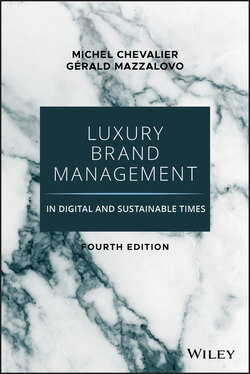Читать книгу Luxury Brand Management in Digital and Sustainable Times - Michel Chevalier - Страница 19
Perceptual Approaches
ОглавлениеSociologists and psychologists are naturally interested in the resonance of luxury in the population—and are, therefore, on the side of the mechanisms of perception.
For some authors, such as Pierre Bourdieu, buying a luxury brand is a way to express a social position: according to him, luxury is essentially defined by its dimension of social communication.8 The American economist Thorstein Veblen and his concept of “conspicuous waste” also belongs in this group.9 According to him, highlighting one's consumption of pricey products is a method of building respectability for the man of leisure. Jean Baudrillard has a similar approach: for him, our objects, torn between their value of use and exchange value “are taken in the fundamental compromise to have to mean, that is to give a social sense.”10 In the same vein, Gilles Lipovetsky recently wrote: “Luxury is seen as perpetuating a form of mythical thinking at the heart of a desacralized commercial culture.”11 In other words, in a society where everything is measured and bought, luxury would reintroduce an almost magical, not strictly quantitative distinction among individuals.
Economists who have reflected upon the phenomenon of luxury are especially attached to integrating the question of its valorization into a global macroeconomic model. They are therefore positioned also on the side of the mechanisms of perception. For instance, the theory on the elasticity of demand for luxury goods is considered to be positive and greater than 1, which means that the demand, paradoxically, will increase when the price increases. This is obviously the symbolic value of the luxury product—its distinctive effect—that is the cause.
